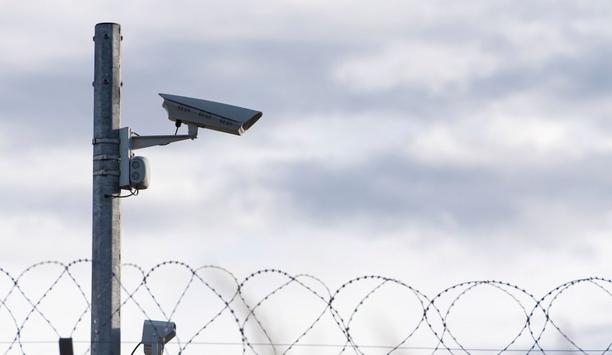What are the benefits of remotely monitored CCTV? Alan Collinge, Operations Director at RemGuard Visual Management, details the key advantages of adopting a remotely monitored CCTV system.
As previous slowdowns have amply demonstrated, economic hardship tends to drive- up crime and, as a consequence, attacks on
| A remote monitoring CCTV system offers cost-effective security solution |
premises with resulting unplanned downtime. So now, more than ever, I would contend that security managers need to maintain and strengthen site protection, rather than degrade their capabilities. It is perfectly possible with the sophisticated security technology now available to arrive at a balance between the pressing requirement to keep sites safe and secure while ensuring that, whatever the ultimate solution adopted, it represents best value for an organisation.
Remote monitoring - proactive CCTV
One type of CCTV technology which stands-up well to scrutiny, under any cost benefit analysis, is remotely monitored, detector activated CCTV. Time and again it has demonstrated an ability to stop crime at the earliest possible stage on commercial, industrial and public sector sites and, crucially, to assist the police to apprehend the culprits.
The growing interest in this intelligent approach to CCTV has also been fuelled by the existence of an all embracing standard BS8418. By pulling together the key elements associated with this type of security, the Code of Practice delivers an invaluable benchmark for anyone considering this type of remote video surveillance for their premises.
 |
| Remotely monitored CCTV protects sites out of hours |
Looking more closely at remotely monitored CCTV surveillance, the overriding attraction has to be the fact that there is visual confirmation by an operator regarding the cause of a specific activation. This minimises false alarms and, crucially, enables the fastest possible appropriate action. In practice, this means transmission equipment being linked to CCTV cameras and detectors on commercial, public sector and, increasingly, domestic sites.
If an alarm/detector is triggered, images from an associated camera can be transmitted to a specialised Remote Video Response Centre (RVRC). Here operators can manage an incident by accessing a site plan, issuing audio warnings on-site (talking CCTV) to intruders - a sufficient deterrent in over 90 per cent of incidents - and, if necessary, alerting the emergency services, who as the incident is confirmed visually, invariably provide a priority response.
A strong case for remote monitoring
The bottom line is that this event-driven method is significantly more effective on many sites than conventional intruder alarms, and offers major cost, flexibility and reliability benefits when compared to manned guarding, patrols and continually recorded CCTV.
Remote monitoring versus intruder alarm solution
The most basic and common option for security of a site is probably the intruder alarm. Police forces have historically quoted false alarm rates of over 90 per cent. More recently, after major efforts by the industry, this has fallen dramatically Event driven surveillance method is significantly more effective on many sites than conventional solutions such as intruder alarms or manned guarding |
Official ACPO (Association of Chief Police Officers) policy is to only issue URNs (Unique Reference Numbers) to CCTV systems which comply with BS8418 and many forces are likely to respond less rapidly to systems which do not have this accreditation.
Remote monitoring versus manned guarding solution
Manned patrols can provide some protection from attacks but a major drawback is that, by the very nature of patrolling, there are unavoidable and dangerous gaps as guards visit a number of sites - windows of opportunity that allow the determined vandal or criminal gangs to move in.
 |
| Remote monitoring solutions maintain and strengthen site protection |
Remote monitoring versus continually recorded CCTV
Another oft-adopted strategy is to install CCTV cameras which can have a deterrent effect for the opportunist. The most common method is simply to continuously record camera images to be viewed later, which is really only of help after an event to secure a conviction; if it is ineffective as a deterrent then it won't stop the damaging incident actually taking place!
CCTV may also be monitored on-site by a security guard but this is as expensive as manned guarding and there is still the problem of maintaining motivation and staying alert when watching a monitor continuously for several hours.
Real results
View case studies showcasing the benefits of adopting a remote monitoring solutions:
Event-driven solution
Facing the video surveillance challenge
Moving ahead with a remotely monitored, detector activated CCTV which meets the BS 8418 standard, security managers can have the peace of mind in these economically challenging times that comes from knowing that their sites have been, cost-effectively, transformed into a secure, controlled environment, ready to meet the threat of attack.

Alan Collinge
Operations Director
RemGuard Visual Management



















